Happy International Pronouns Day! 🥳
I use he/him pronouns.
Happy International Pronouns Day! 🥳
I use he/him pronouns.
And while we’re talking about AI.
It took a disproportionate about of time to find the right (tiny) link, but eventually I managed to opt-out of my content being used to train Facebook’s AI. They don’t make it easy, do they?
This is a repost promoting content originally published elsewhere. See more things Dan's reposted.
…
“The grid needs new electricity sources to support AI technologies,” said Michael Terrell, senior director for energy and climate at Google.
“This agreement helps accelerate a new technology to meet energy needs cleanly and reliably, and unlock the full potential of AI for everyone.”
The deal with Google “is important to accelerate the commercialisation of advanced nuclear energy by demonstrating the technical and market viability of a solution critical to decarbonising power grids,” said Kairos executive Jeff Olson.
…
Sigh.
First, something lighthearted-if-it-wasn’t-sad. Google’s AI is, of course, the thing that comes up with gems like this:

Western nations have, in general, been under-investing in new nuclear technologies2, instead continuing to operate ageing second-generation reactors for longer and longer timescales3 while flip-flopping over whether or not to construct a new fleet. It sickens me to say so, but if investment by tech companies is what’s needed to unlock the next-generation power plants, and those plants can keep running after LLMs have had its day and go back to being a primarily academic consideration… then that’s fine by me.
Of course, it’s easy to also find plenty of much more-pessimistic viewpoints too. The other week, I had a dream in which we determined the most-likely identity of the “great filter”: a hypothetical resolution to the Fermi paradox that posits that the reason we don’t see evidence of extraterrestrial life is because there’s some common barrier to the development of spacefaring civilisations that most fail to pass. In the dream, we decided that the most-likely cause was energy hunger: that over time, an advancing civilisation would inevitably develop an increasingly energy-hungry series of egoistic technologies (cryptocurrencies, LLMs, whatever comes next…) and, fuelled by the selfish, individualistic forces that ironically allowed them to compete and evolve to this point, destroy their habitat and/or their sources of power and collapsing. I woke from the dream thinking that there’d be a potential short story to be written there, from the perspective of some future human looking back on the path of the technologies that lead them to whatever technology ultimately lead to our energy-hunger downfall, but never got around to writing it.
I think I’ll try to keep a hold of the optimistic viewpoint, for now: that the snake-that-eats-its-own-tail that is contemporary AI will fizzle out of mainstream relevance, but not before big tech makes big investments in next-generation nuclear, renewable, and energy storage technologies. That’d be nice.
1 Hilari-saddening: when you laugh at something until you realise quite how sad it is.
2 I’m a big fan of nuclear power – as I believe that all informed environmentalists should be – as both a stop-gap to decarbonising energy production and potentially as a relatively-clean long-term solution for balancing grids.
3 Consider for example Hartlepool Nuclear Power Station, which supplies 2%-3% of the UK’s electricity. Construction began in the 1960s and was supposed to run until 2007. Which was extended to 2014 (by which point it was clearly showing signs of ageing). Which was extended to 2019. Which was extended to 2024. It’s still running. The site’s approved for a new reactor but construction will probably be a decade-long project and hasn’t started, sooo…
eBay UK have changed their terms to (a) remove seller fees for most private sellers, but (b) instead of paying-out immediately, payouts are four times a year (or on-demand).
That sounds like they’re trying to keep money in their ecosystem. The hope is, I guess, that by paying sellers in virtual “eBay Pounds” rather than actual money in the first instance they’ll encourage those sellers to become buyers again (either of other listings, or of eBay’s postage and other services). You can cash out anytime you like, but you can never leave.
You see the same technique used e.g. by the National Lottery, who pay out “small” winnings into your online account, knowing that the vast majority of winnings are on the order of only a few times more than the value of a ticket, and so players will be more-likely to “re-invest” if they’re not paid-out directly.
Or maybe I’m just being cynical.
This evening I pushed against my illness-addled brain to try to sit in on the fortnightly Zoom call with the Three Rings dev team. Unfortunately it seems like the primary symptom of my cold is an inability to string words together.
At one point, I apologised to by colleague “Beff” (I meant “Bev”, but I had just been talking about “Geoff”) that I couldn’t work out how to stop “scaring my screen” (well, I suppose Halloween is coming up…). Then, realising my mistake, explained that it was a bit of a “ting-twister”.
I should just go to bed, right?
This post is also available as a podcast. Listen here, download for later, or subscribe wherever you consume podcasts.
A lot of attention is paid, often in retrospect, to the experience of the first times in our lives. The first laugh; the first kiss; the first day at your job1. But for every first, there must inevitably be a last.
I recall a moment when I was… perhaps the age our eldest child is now. As I listened to the bats in our garden, my mother told me about how she couldn’t hear them as clearly as she could when she was my age. The human ear isn’t well-equipped to hear that frequency that bats use, and while children can often pick out the sounds, the ability tends to fade with age.
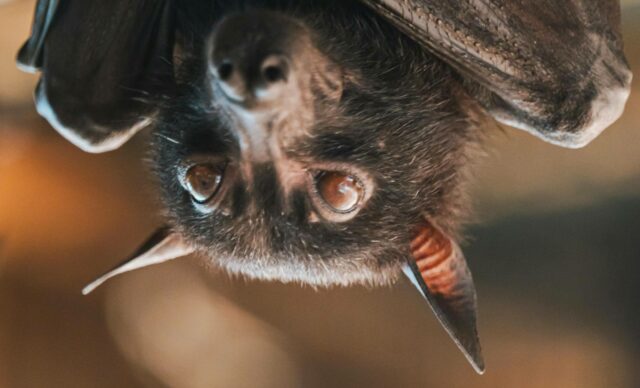
This recollection came as I stayed up late the other month to watch the Perseids. I lay in the hammock in our garden under a fabulously clear sky as the sun finished setting, and – after being still and quiet for a time – realised that the local bat colony were out foraging for insects. They flew around and very close to me, and it occurred to me that I couldn’t hear them at all.
There must necessarily have been a “last time” that I heard a bat’s echolocation. I remember a time about ten years ago, at the first house in Oxford of Ruth, JTA and I (along with Paul), standing in the back garden and listening to those high-pitched chirps. But I can’t tell you when the very last time was. At the time it will have felt unremarkable rather than noteworthy.
First times can often be identified contemporaneously. For example: I was able to acknowledge my first time on a looping rollercoaster at the time.

I wonder what it would be like if we had the same level of consciousness of last times as we did of firsts. How differently might we treat a final phone call to a loved one or the ultimate visit to a special place if we knew, at the time, that there would be no more?
Would such a world be more-comforting, providing closure at every turn? Or would it lead to a paralytic anticipatory grief: “I can’t visit my friend; what if I find out that it’s the last time?”
1 While watching a wooden train toy jiggle down a length of string, reportedly; Sarah Titlow, behind the school outbuilding, circa 1988; and five years ago this week, respectively.
2 Can’t see the loop? It’s inside the tower. A clever bit of design conceals the inversion from outside the ride; also the track later re-enters the fort (on the left of the photo) to “thread the needle” through the centre of the loop. When they were running three trains (two in motion at once) at the proper cadence, it was quite impressive as you’d loop around while a second train went through the middle, and then go through the middle while a third train did the loop!
3 I’m told that the “tower” caught fire during disassembly and was destroyed.
This is a repost promoting content originally published elsewhere. See more things Dan's reposted.
Girl on the Net is a popular sex blogger, so this is a link to a SFW page on an otherwise NSFW site. If your only concern is seeing or hearing sexy things or somebody looking over your shoulder and thinking that’s what you’re doing, go ahead and read it. But if you’re connected through the monitored corporate firewall of a sex-negative employer, you might want to read on a different device…
25 different forms of London transport in a day
Hello! My name is Sarah and I love London transport. Because I am a very cool and interesting person, for a long time I’ve thought it might be fun to see how many different types of London transport I can take in a 24-hour period: bus, tram, tube, train, ferry, etc. The trip outlined below took me (and the lucky man I invited on this date) on 25 different forms of London transport in one single day. It criss-crossed the city from East through North to West, then South, Central, South East and back to where we started. I’m sharing the itinerary because this turned out to be a phenomenal adventure, and I thought others might like to give it a go.
…
The rules
The rules for the challenge were:
- Transport must be transport, not a ride, i.e. it must take me from A to B. So the London Eye doesn’t count, but the cable car definitely does.
- Each form of transport must continue the journey. So no going from A to B then immediately back again. The journey can meander, but it must keep moving forwards.
- No form of transport can be taken more than once. Changes on a single line are OK (for instance, if traveling on the DLR from Greenwich to Bank requires a change at Canary Wharf, that’s fine, or if you’re on a bus that gets taken out of service you can get on the next one) but repeated trips on the same form of transport aren’t allowed (you can’t take one double-decker bus in the morning then another in the afternoon). The exceptions to this are: walking; escalators; stairs. We’ll be using these a lot.
…
This sounds like a ludicrously fun adventure and a great use of a date for anybody who can find an even-remotely similarly-transport-obsessed partner.
The one thing this wonderful post is lacking is a map. Oh, and maybe a GPX file, but that’s a much bigger ask. Really I just want the map, to help me visualise the route. Maybe with the different forms of transport colour-coded or something? Okay, okay, now I’m asking a lot again.
Just go read it, it’s a fun London romp.
This is a repost promoting content originally published elsewhere. See more things Dan's reposted.
Regarding the alignment offer at Automattic that resulted in around 1 of every 12/13-or-so Automatticians being paid to leave, my colleague Rosie writes of her experience of the week of the offer and our subsequent week in Mexico:
…
I never thought about taking the offer, but last week took a toll on all of us. It was a weird and sad week. So the Woo DM worked not only as it usually does, a week to bond with colleagues, have fun and collaborate in person. It was also one hundred times more energizing than it usually is. It had that little taste of “we are here because we believe in this. LFG!!!”. A togetherness that feels special. We could talk, discuss, and share our concerns, opinions, memories and new ideas for the future of Woo and WordPress.
…
That’s a good summary of the week, I feel. It was weird and sad, especially to begin with, but it grew into something that was energising and hopeful. There was, in particular, a certain solidarity, of us being the ones who stayed. It’s great to be reminded that my experience is shared.
Whether or not somebody chose to stay for the same reason as me, or as Rosie, it felt like a bonding experience to be among those who made that same decision. I’m glad we got to have this meetup (even though I’m feeling a bit run-down by a combination of exhaustion, jetlag, and – principally – some kind of stomach bug I’ve contracted somewhere along the way, ugh).
I’ve spent the last week1 in Tulum, on Mexico’s beautiful Yucatan Peninsula, for an Automattic meetup. And as usual for these kinds of work gatherings, it was magical (and, after many recent departures, a welcome opportunity to feel a closer connection to those of us that remain).
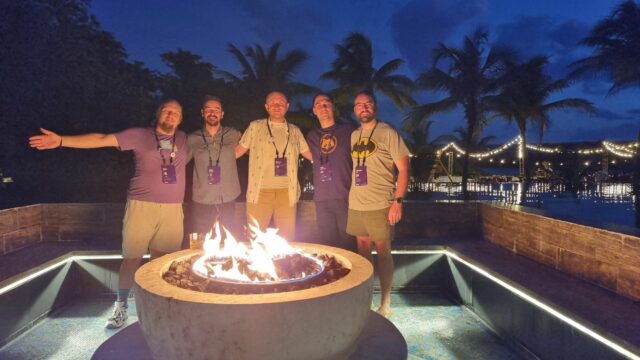
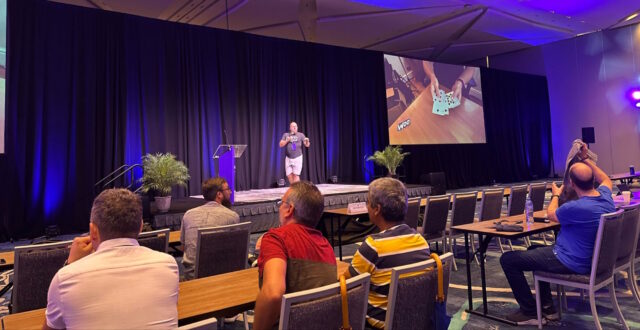
No, I mean that the whole thing felt magical. Like, I’ve discovered, every Automattic meetup I’ve been to has been. But this is perhaps especially true of the larger ones like Vienna last year (where my “flash talk” topic was Finger for WordPress; turns out I love the excuse to listen to other people’s nerdity and fly my own nerd flag a little).

Our events team, who are already some of the most thoughtful and considerate planners you might ever meet, had gone above and beyond in their choice of location. The all-inclusive resort they’d booked out for pretty-much our exclusive use was a little isolated and not the kind of place I’d have chosen for a personal holiday. But it provided all of the facilities my team, sibling teams, and division could desire for work, rest and play.
As usual, an Automattic meetup proved to be a series of long but energising days comprising a mixture of directly work-related events, social team-building and networking opportunities, chances for personal growth and to learn or practice skills, and a sweet sprinkling of fun and memorable activities.

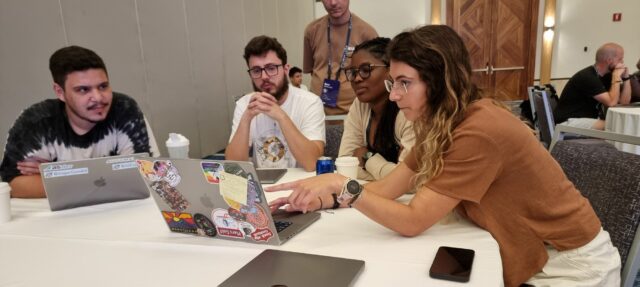
Our meetups might not feel like “work” (even when they clearly are!), but rather like… I don’t know… a holiday with 400 of the coolest, friendliest, most-interesting people you could ever meet6… which just happens to have an overarching theme of something that you love.
Recently-developed changes to strategic priorities, and the departure of a few of our colleagues during the recent aforementioned “realignment”, meant that my “superteam” – my team and its siblings – had a lot to talk about. How can we work better together? How can we best meet the needs of the company while also remaining true to its open-source ideology? What will our relationships with one another and with other parts of the organisation look like in the year to come?
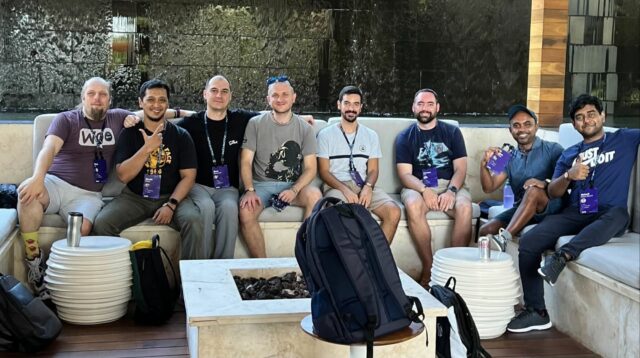
Every morning for a week I’d wake early and walk the soft warm sands and swim in the sea, before meeting with colleagues for breakfast. Then a day of networking and workshops, team-time activities, meetings, and personal development, which gave way to evenings with so much on offer that FOMO was inevitable7.

Our meetups are merely an intense distillation of what makes Automattic magical on a day-to-day basis.

Did I mention that we’re recruiting?
1 Travelling light, as has become my normal.
2 Excluding the two who couldn’t make it in person and the one who’s on parental leave.
3 Another example might be the pronoun pin badges that they made available in various locations, which I’ve written about already.
4 The spiders, which weave long thin strand webs that hang like tinsel from the cave roof, catch and eat mosquitoes, which I’m definitely in favour of.
5 Okay, fine: Harvey Mackey isn’t the original source, and it’s not clear who was.
6 Also, partially-tame trash pandas, which joined iguanas, agouti, sand pipers, and other wildlife around (and sometimes in) our accommodation.
7 I slightly feel like I missed-out by skipping the board gaming, and it sounds like the movie party and the karaoke events were a blast too, but I stand by my choices to drink and dance and perform magic and chat about technology and open source and Star Wars and blogging and music and travel and everything else that I found even the slightest opportunity to connect on with any of the amazing diverse and smart folks with whom I’m fortunate enough to work.
8 While I completely reject the magical thinking espoused by our “sound bath” facilitator, it was still a surprisingly relaxing and meditative experience. It was also a nice chill-out before going off to the higher-energy environment that came next at the poolside bar: drinking cocktails and dancing to the bangin’ tunes being played by our DJ, my colleague Rua.
This is a repost promoting content originally published elsewhere. See more things Dan's reposted.
A conversation about staying private and stripping EXIF tags on blogs lead to shdwcat asking the question “what would happen if you took a picture on the moon?”
…
However, I figured we could do better than “a point high above the Earth.” If you could state the coordinate system, you should be able to list an actual point on the moon.
…
It’s a fun question. Sure, you need to shoot down the naysayers who, like colin, rightly point out that you couldn’t reasonably expect to get a GPS/GNSS signal on the moon, but still.
GPS (and most other GNSS technologies) fundamentally work by the principle of trilateration. Here’s the skinny of what happens when your GPS receiver – whether that’s your phone, smartwatch, SatNav, or indeed digital camera – needs to work out where on Earth it is:
So yeah: that tiny computer on top of your camera or within your wristwatch? It’s differentiating to miniscule precision measurements of the speed of light, from spacecraft as far away as half the circumference of the planet, while compensating for not being a timekeeping device accurate enough to do so and working-around the time dilation resulting from the effect of general relativity on the satellites4.
Supposing you could pick out GPS signals from Earth orbit, from the surface of the moon (which – again – you probably can’t – especially if you were on the dark side of the moon where you wouldn’t get a view of the Earth). Could it work?
I can’t see why not. You’d want to recalibrate your GPS receiver to assume that the “time” satellite – the one with the earliest-apparent clock – was much further away (and therefore that the real time was later than it appears to be) than an Earth-based GPS receiver would: the difference in the order of 1.3 seconds, which is a long time in terms of GNSS calculation.
Again, once you had distance measurements from three spatial satellites you’d be able to pinpoint your location, to within some sphere of uncertainty, to one of two points. One would be on the moon (where you know that you are5), and one would be on the far side of the Earth by almost the same distance. That’s a good start. And additional satellites could help narrow it down even more.
You might even be able to get a slightline to more satellites than is typically possible on Earth, not being limited by Earth curvature, nor being surrounded by relatively-large Earth features like mountains, buildings, trees, and unusually-tall humans. It’s feasible.
If we wanted to go further – and some day, if we aim to place permanent human settlements on the moon, we might – then we might consider a Lunar Positioning System: a network of a dozen or so orbiters whizzing around the moon to facilitate accurate positioning on its surface. They’d want to be in low orbits to avoid the impact of tidal forces from the much-larger nearby Eath, and with no atmosphere to scrape against there’s little harm in that.
By the time you’re doing that, though, you might as well ditch trilateration and use the doppler effect, Transit-style. It works great in low orbits but its accuracy on Eath was always limited by the fact that you can’t make the satellites fly low enough without getting atmospheric drag. There’s no such limitation on the moon. Maybe that’s the way forward.
Maybe far-future mobile phones and cameras will support satellite positioning and navigation networks on both Earth and Luna. And maybe then we’ll start seeing EXIF metadata spanning both the WGS-84 datum and the LRO-ME datum.
1 That’s still only about a twentieth of the way to the moon, by the way. But there are other challenging factors, like our atmosphere and all of the obstructions both geographic and human-made that litter our globe.
2 Protip: it doesn’t.
3 Satnav voice: “After falling for forty thousand kilometres, you will reach your destination.”
4 The relativistic effects on GPS satellites cannot be understated. Without compensation, GPS accuracy would drift by up to 10km for every day that the satellites were in orbit, which I reckon would make them useless for anything more than telling you what hemisphere you were in within 5½ years!
5 If you’re on the moon and don’t know it, you have a whole different problem.
From safely outside of its predicted path, just around the Yucatan coast, Hurricane Milton seems like a forboding and distant monster. A growing threat whose path will thankfully take it away, not towards, me.
My heart goes out to the people on the other side of the Gulf of Mexico who find themselves along the route of this awakened beast.